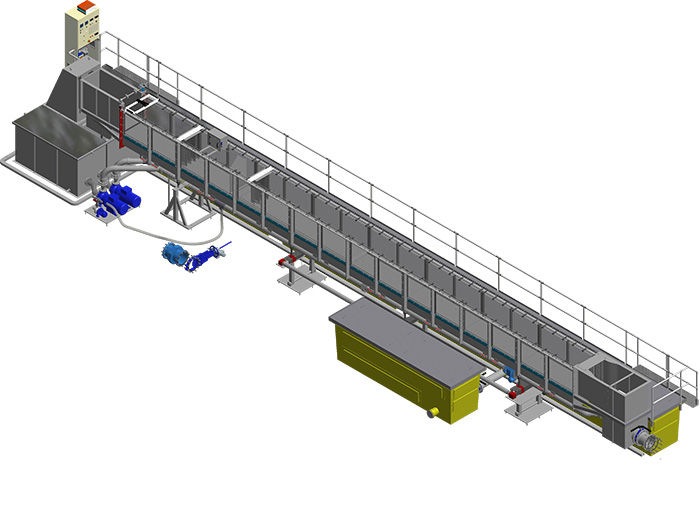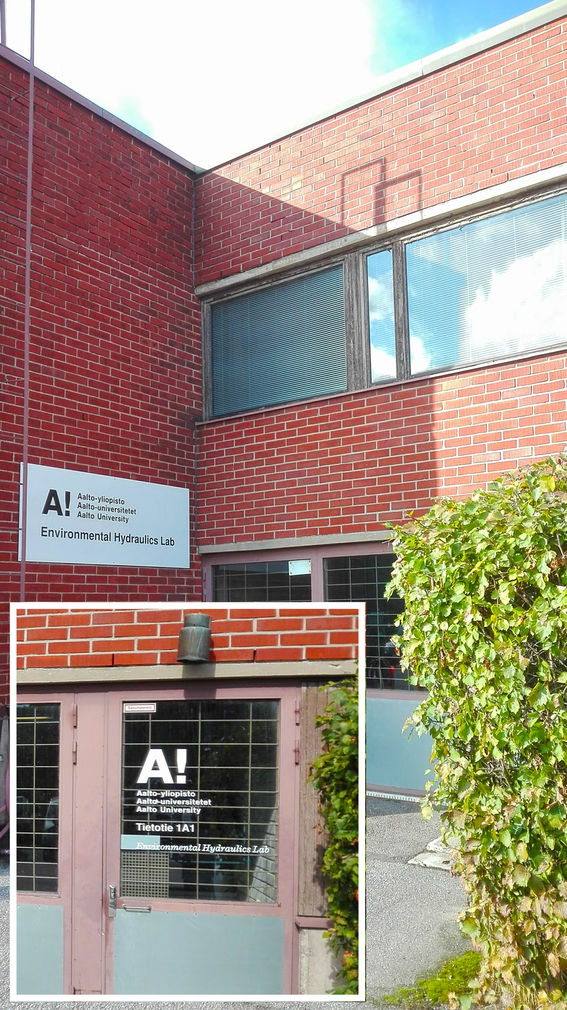Environmental Hydraulics Lab

Environmental hydraulics and ecohydraulics is a rapidly developing research domain with an objective to protect and restore quality of the environment when using water resources. We seek to improve our understanding of the dynamics and processes of water, sediment, vegetation, nutrients, and harmful substances in the hydro-environment. Our studies deal with both natural and built environments, in particular rivers, agricultural channels, and urban water features.
Aalto Environmental Hydraulics Lab (EHL) is a multipurpose laboratory for experimental research and teaching activities. With two flumes and other equipment, EHL provides a setting for scientific research with a view on applications in environmentally sound hydraulic engineering.
At Aalto University, environmental hydraulics is a transdisciplinary field that combines technological, environmental, economical and societal interests in a wide context. Our research is motivated by the challenges arising from environmental flood management and river restoration.
Environmentally sound hydraulic engineering seeks to mitigate adverse effects on the natural water cycle, and rehabilitate damages in the hydro-environment. The proper understanding of the associated physical, chemical and biological attributes and processes is the basis for the development of reliable modelling tools for river hydraulics, morphology, and sediment and pollutant transport.
Our investigations focus on flow-vegetation-sediment interactions, with special emphasis placed on vegetative hydraulics. Laboratory and field-scale experiments and numerical models are used to develop potential engineering solutions to transdisciplinary problems.
Visit the Environmental Hydraulics Lab on research.aalto.fi
Environmental Hydraulics Flow Channel specifications
The Environmental Hydraulics Flow Channel (2016) is a general purpose current flume. The main use is for applications in research and teaching in hydraulic engineering using clean re-circulated water. Secondarily, experiments involving sediments or dissolved substances or waves can be conducted. The system is designed to operate in two water re-circulation modes:
- Mode A: up to 0.120 m³/s: complete turn-key, stand-alone, self-contained system. Pumps with a variable speed control system connected to magnetic flow meter are used to adjust the flow in Mode A (fine sediment or other substances can be used).
- Mode B: up to 0.300 m³/s: connected to the laboratory water re-circulation system. Upper reservoir (~100 m³) with constant head is used to deliver water to the flume through magnetic flow meter controlled valve (re-circulated clean water).

The flume is equipped with an electrically driven tilting system providing a range from negative to positive slopes between -0.75% and +2.1%. The mechanism consists of a motorized mechanical gear system combining three ground supports.
As a special feature, two deepenings (L 950 mm, W 230 mm, H 407 mm) with a false floor (double bottom) are constructed slightly downstream of the middle of the long section. This design allows placing instrumentation such as force measurement devices in the compartments underneath the flume bed without disturbing the flow.
The flume bed is tapped along the centre line at 0.25 m distances for pressure measurement. In addition, there are threaded holes at 0.5 m distances in two rows to allow easy installation of different structures and elements in the flume.
Fine sediments and other particulate/solute matter can be used in Mode A (particles mostly in suspension, no feeding/trapping system for coarse material). The flume design allows fine sediment particles to be circulated and retained in motion through the re-circulation system. The flume including the tanks and piping are designed so that fine sediments or pollutants can be washed and discharged to waste water treatment.
The flume can be used as a wave tank without water circulation by inserting a flap type wave generator with two absorber elements. As a further option, the flume may be used for some hydrological investigations without the water re-circulation system. For such investigations, the flume may be filled with natural soil or industrial material to investigate flow in porous media, infiltration on horizontal or gentle slopes etc.
Quick facts – Environmental Hydraulics Flow Channel (2016)
| Total length of the flume including inlet and outlet tanks | 20.3 m |
|---|---|
| Length of the working section (glass sided) | 16.0 m |
| Width | 0.60 m |
| Depth | 0.80 m |
| Flow rate | 0.120 m³/s in Mode A (self-contained) and 0.300 m³/s in Mode B (connected to the laboratory re-circulation system) |
| Tilting range | -0.75%–2.1% |
| Wave generator | flap type with no water circulation |
Instrumentation, control, and interfaces
Computer-controlled flume operation and data acquisition system is designed with flexibility to attach and log user-defined sensors and instruments. The proprietary software is capable of controlling flume functions and visualising primary parameter values in real-time, with an option of data logging. For “open access”, the control console includes software-independent outputs at real-time (sampling frequency >20 Hz) to enable the use of standard industrial data loggers and software for recording the measurement data.
The base setup includes logging of
- Magnetic flowmeters for both Mode A and B
- Electronic inclinometer for the bed slope
- Carriage position
- Electronic manometer for pressure distribution (currently 10 pressure sensors but more can be easily attached)
- Electronic differential pressure transducer
- Thermistor sensor for water temperature
- Water level in the upper reservoir in Mode B
Other measurements such as conductivity, turbidity, force sensors etc. can be recorded using the same logging system. Some instruments such as ADVs are connected to device specific software/logging systems.

Visitor information, directions
The Environmental Hydraulics Lab (EHL) is located at Tietotie 1A1, 02150 Espoo, opposite the Water Building in the Otaniemi campus. You can reach EHL easily by both public transportation and private car. A metro station and bus stops are located at Tietotie.
Access to EHL is across the street from the metro station past the Aalto Ice Tank. Continue down to the parking area for about 150 meters. Entrance to EHL is on your right through the A1 door (i.e. not from the main door marked A2).
You cannot access the building without having an appointment, as all doors are locked, and there is no reception desk.
See the location of EHL in:










